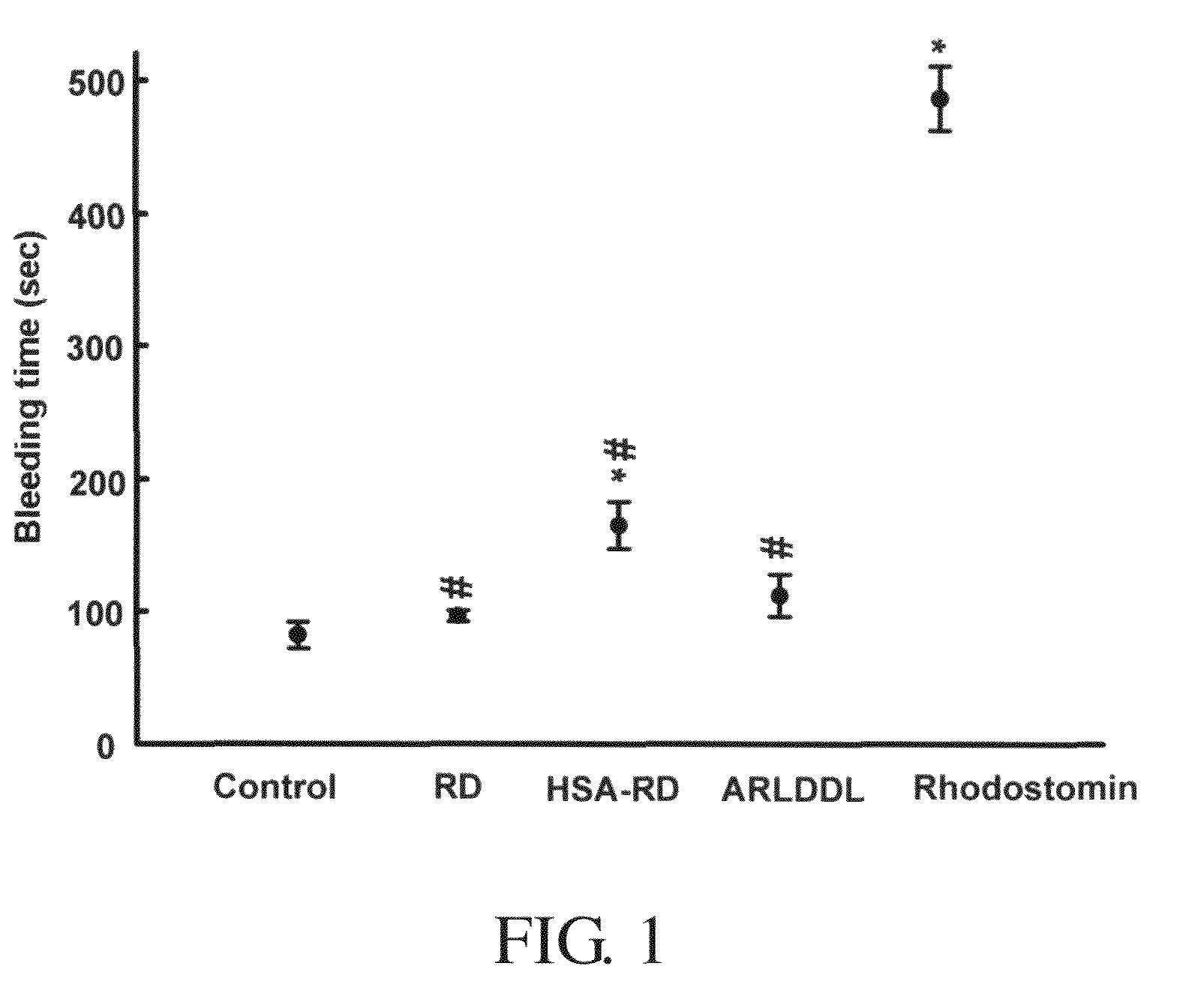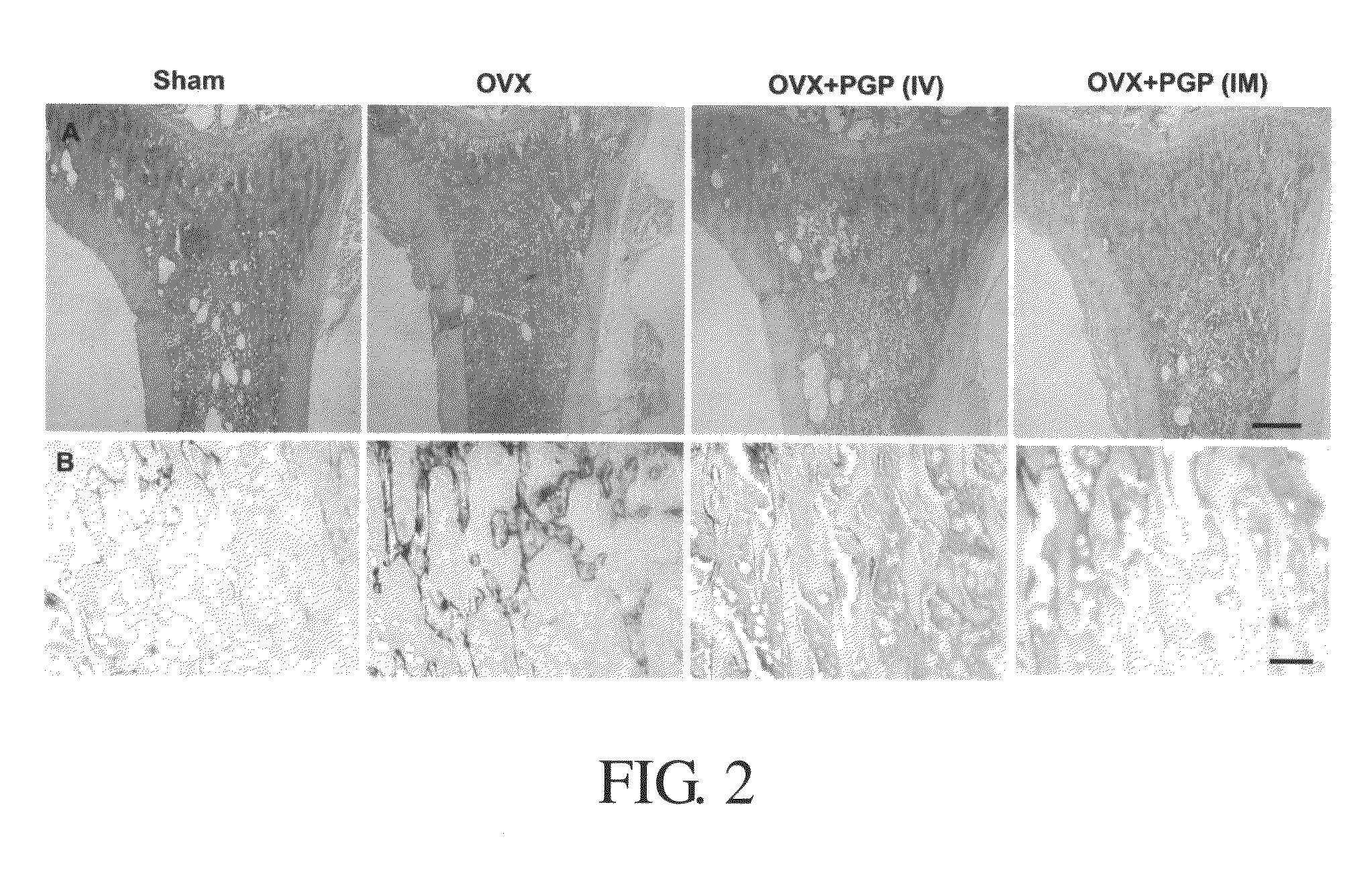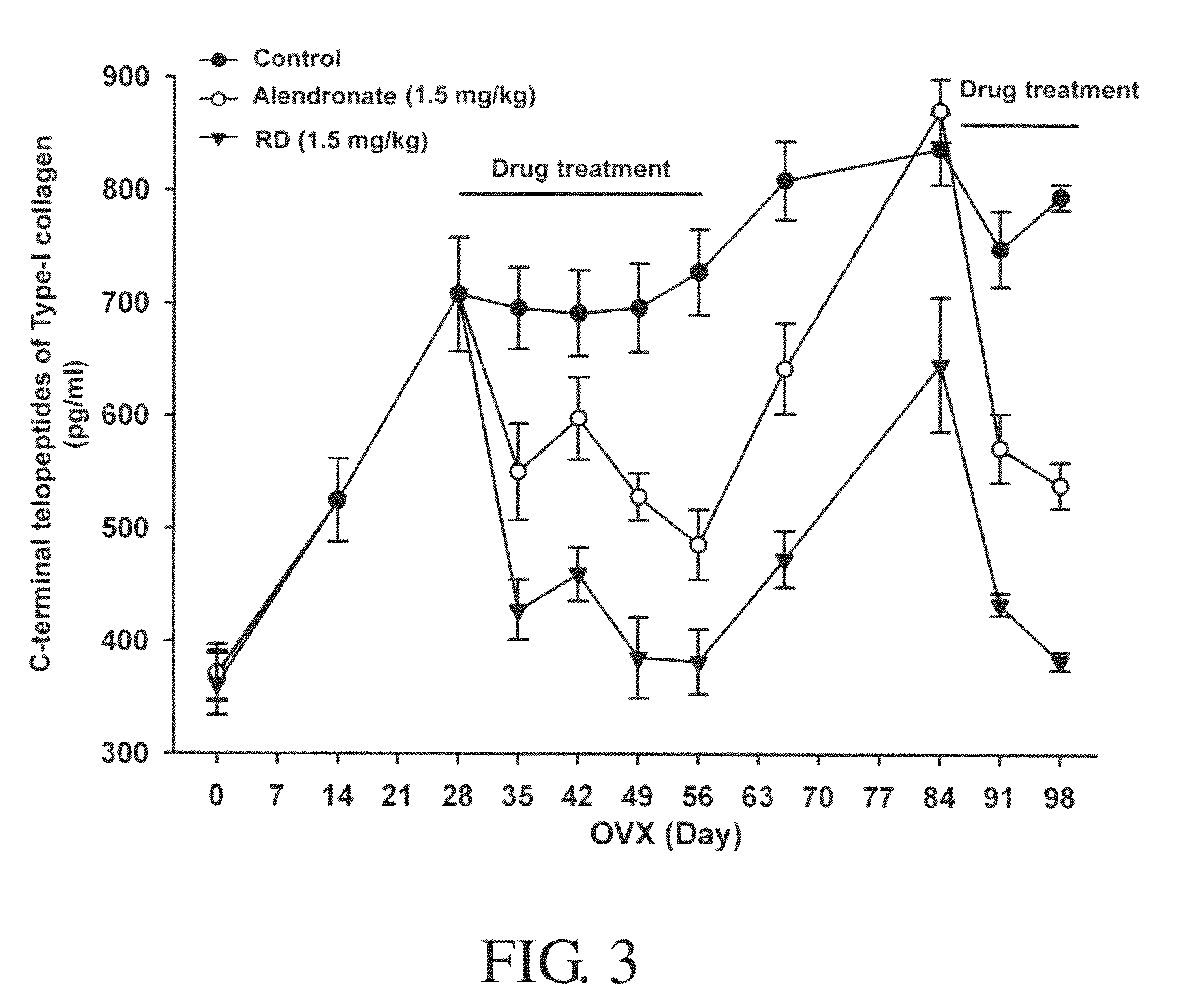Disintegrin variants and their use in treating osteoporosis-induced bone loss and angiogenesis-related diseases
a technology of disintegrin and variants, applied in the field of disintegrin variants, can solve the problems of undesirable side effects of inhibition of platelet aggregation and serious side effects of rhodostomin, and achieve the effects of increasing osteoclast activity, increasing osteoclast formation, and preventing osteoporosis
- Summary
- Abstract
- Description
- Claims
- Application Information
AI Technical Summary
Benefits of technology
Problems solved by technology
Method used
Image
Examples
example 1
Construction of DNAs Encoding Rhodostomin and Variants
[0163]Rhodostomin was cloned and expressed in the vector pGEX-2KS [20] as a template. The DNA encoding Rho was composed of codons preferentially used in Pichia pastoris. Rho DNA was amplified by the polymerase chain reaction (PCR) with the sense primer 5′-GAATTCGAATTCCATCATCATCATCATCAT CATGGTAAGGAATGTGACTGTTCTT-3′ (Rho-Pic-1; SEQ ID NO: 3) that had Eco R1 recognition and six histidine residues for facilitating purification. The antisense primer is 5′-CCGCGGCCGCGGTCAGTGGTATCTTGGACAGTCAGC-3′ (SEQ ID NO: 136) or 5′-CCGCGGCCGCGGTTAGTGGTATCTTGGACAGTCAGC-3′ (Rho-Pic-2; SEQ ID NO: 4) with Sac II recognition and a TCA (or TTA) stop codon. The PCR product was purified and then ligated into the Eco R1 and Sac II sites of the yeast recombination vector, pPICZαA. The recombinant plasmid was used to transform a DH5α strain, and colonies were selected on agar plates with low salt LB (1% tryptone, 0.5% yeast extract, 0.5% NaCl, 1.5% agar at pH ...
example 2
Protein Expression and Purification of Rhodostomin and Variants
[0169]The protein expression of rhodostomin and its variants in Pichia was performed according to the protocols of the Pichia EasyComp™ Kit with minor modifications. Briefly, a total of 10 μg plasmids containing DNA encoding rhodostomin or its variants were purified and digested with Sac I to linearize the plasmids. Pichia strain X33 was transformed with the linearized constructs by a heat shock method, using a Pichia EasyComp™ kit from Invitrogen®. The transformant integrated at the 5′ AOX1 locus by a single crossover. PCR was used to analyze Pichia integrants to determine if the Rho gene had been integrated into the Pichia genome, and cells were lysed by Lyticase (Sigma). Colonies were selected on agar plates containing YPD (1% yeast extract, 2% peptone, 2% glucose, and 2% agar) and 100 μg / ml Zeocin. A number of clones with multiple copies of Rho gene insertions were selected to pick the clone having the highest Rho pr...
example 3
Effects of RD and its Derivatives on Bleeding Time
[0173]Measurement of bleeding time was performed as follows: Mice were anaesthetized with trichloroacetaldehyde (200 mg / kg), and bleeding time was measured by a method described previously, with minor modifications [21]. Saline or proteins were injected intravenously through the tail vein of the mouse (ICR, male, with an average body weight of 23.5±1.8 g). A sharp cut of 0.5 mm from the tail tip of the mouse was made 5 min after injection. The tail was then immediately immersed in a saline-filled beaker, kept at 37° C., and the bleeding time was measured.
[0174]FIG. 1 shows the effects of RD and ARLDDL (SEQ ID NO: 38) proteins on tail bleeding time in mice. Tail bleeding time was measured 5 min after intravenous administration of saline, RD, ARLDDL (SEQ ID NO: 38), rhodostomin (0.6 mg / kg for each) of HSA-RD (5 mg / kg). An intravenous injection of rhodostomin (0.5 mg / kg) exerted a pronounced effect in prolonging the clotting time in mic...
PUM
| Property | Measurement | Unit |
|---|---|---|
| average molecular weight | aaaaa | aaaaa |
| average molecular weight | aaaaa | aaaaa |
| average molecular weight | aaaaa | aaaaa |
Abstract
Description
Claims
Application Information
 Login to View More
Login to View More - R&D
- Intellectual Property
- Life Sciences
- Materials
- Tech Scout
- Unparalleled Data Quality
- Higher Quality Content
- 60% Fewer Hallucinations
Browse by: Latest US Patents, China's latest patents, Technical Efficacy Thesaurus, Application Domain, Technology Topic, Popular Technical Reports.
© 2025 PatSnap. All rights reserved.Legal|Privacy policy|Modern Slavery Act Transparency Statement|Sitemap|About US| Contact US: help@patsnap.com



